Known predominantly as a sound artist, although her aesthetic core is multimedia, Simina Oprescu manages to build her own universe of sound, which is valid and compelling not only locally. It is comprised of not only software- or hardware-generated abstractions, but also field recordings or, similar to Ukrainian artist Katerina Zavoloka for instance, her own voice. The majority of Simina’s compositions, some of them video illustrated by the author herself on the official website (see, for example, the video for Pain), are to be found on a Soundcloud packed with all sorts of fine-tuned experiments. Here, listeners can find both compelling abstract pieces which require some brain power in order to be understood, preferably with eyes closed, and more club-oriented sounds with powerful kicks derived from the “purist” faction of old-school Berlin, dance-inviting but without being necessary labeled as “techno” (as is the case with KI, an album in the making), as they feature some additional elements that contribute to an eclectic atmosphere, besides the usual classic elements that are specific to the genre.
Making use of clean yet abrasive and precise sounds that recall the aesthetics of artists such as Alva Noto (Carsten Nicolai), Byetone or Priest Eldritch (in what belongs to the universal presence of rhythm in any sound “product”, though the mere concept of “product” is extremely debatable in postmodernism), Simina Oprescu does not express herself merely through sound, but creates new soundscapes that enhance other media (photo and video), which she uses with grace, but also with unassuming innocence. Right now she is working on KI, as well as the soundtrack for a black-and-white silent film, a challenge for which she decided not to use any foley sounds, only synthetic ones. The interview below reveals much more, as Simina likes to be very thorough and theoretical when it comes to her own aesthetic.
For a while now, you have been recognized as sound artist, yet you have a background in visual arts. How did you make this switch? Does the way you regard images influence the way you approach sounds?
It happened quite naturally, with sound being, in any case, a kind of hobby I had since childhood. I grew up with classical music, a Blüthner piano, and a Hora guitar I so desired for my 12th birthday. The real switch happened while elaborating my grad work for UNARTE – Photo-Video. I had a video installation with mapping on two 2/3m panels and a simple projection with… sound, of course. Well…, that’s when I had a revelation, quite ironically, as the theme of the work was catharsis. While doing the montage, I realized that sound is the prime way. Sound is a kind of perpetuum mobile, it is like the metamorphosis of a thought into a composition. Paying a heterogeneous attention to my action, an introspective approach in choosing a sound over another were (and still are) objective ways to perceive things on a subjective level.
What feels closer to the way you express your aesthetic: photo, video, or sound? At the moment, it seems that you keep them separated. Is it because you feel the need to explore them individually?
I have been drawing since I was a child, so, naturally, photography was my first crush, video was second, and sound has been up there ever since I can remember. I do kind of keep them separated, you are right, as I use a different approach and a different state of mind in the process of creating and working. In the end, all are like an orchestra, I cannot say I prefer one or the another, but sound clearly seems superior to me. It is invisible, and the invisible is always the most alluring.
What is your connection with field recordings, what do you like to record and what inspires you from nature or the industrial-mechanical area?
I often stroll on the streets with my recorder and headphones just to better listen to what is hidden, for inspiration. Very often, we don’t pay attention to what surrounds us, especially when we listen almost non-stop to music in our headphones. At the Conservatory I learned to divide sounds into two categories – mechanical and organic types of sounds. The organic sound is warm, it has a natural feel – it’s from nature, while the mechanical one is cold, it usually has a more… industrial feel. I only record what belongs to the area of foley and instruments, so to speak – the so-called sound objects (anything that can produce a sound is a sound object), a kind of need to do something with your hands, to beat, to pluck, to harrow, to jangle, to keep a beat, a continuous quiver.
Moments tend to be of two kinds – those of pure inspiration and those that are clear-cut, within certain categories, subcategories and rules, then you have to sit down and do the work, as they say.
Do you see sounds? Is it a synesthetic vision? Did you ever try, let’s say, to produce a sound starting from an image, by translating images into sounds? Since you also work with visual elements, there has to be an a/f/v connection, especially since your aesthetic in recent years focuses almost exclusively on the audio side. Are you thinking of adding a visual element to your audio performances?
Sound has color anyway. This notion of seeing sounds, of course, is something subjective. If we use our imagination, we can attribute various sounds to colors. For example, white is a high, diaphanous sound; of course, black is a grave sound, near bass, yellow is a warm sound, most likely of the organic type, blue is most likely of a mechanical type.
I tried to do that among my early experiments. At one point, I found an underground software that could translate a photograph into sound, but the sounds were rather crude and unsatisfying. There is also a phone app, PhonoPaper, developed by a Russian called Alexander Zolotov, but it is more or less a toy to try out some sounds determined by images. Back then I had a fantasy, to translate various objects into waveform, as if you only see their outline, like their personalized profile, and make a composition with… sound objects, the sound being determined by their profile. I did not give up on that yet! [laughs] There is also The Visual Microphone, that was founded by Qatar Computing Research Institute and American National Science Foundation together with researchers from the MIT labs, Adobe and Microsoft, that was published in 2014. It is an algorithmic process that turns pixel data from video recordings into sonic information. Of course, there is an a/f/v connection. The human being itself is tied to this trinity, triad, name it however you like.
The visual element for my performances is in the making. A collaboration is due to be announced soon. I tried it myself with videos that I made, yet it often feels like I cross from one realm to another, a crossing that often involves a different kind of concentration, dedication and knack. A different technique and a different vision that could not, in most cases, be produced wham-bam, with sound determining the story in this case. I work alone, although this endeavor would deserve a team.
Your sources of inspiration range from trash bins next to which Chanel bags were thrown to theory quotes that are not so easily accessible, from the deconstructivists, contemporary musicians, psychoanalysts and pataphysicians. Furthermore, on your generous soundcloud profile you use quotes by Genesis P-Orridge and Deleuze-Guattari. How do you manage to touch up on so many shades of gray? In what sense do you perceive the notion of gray in experimental music and in what way do you deconstruct what are you using?
I like it that you specifically remembered that photo with the trash bin and the Chanel bag next to it! [laughs]
How do I succeed? Out of pure curiosity. The way I see it, everything is connected to everything. That gray zone you identify is, for me, the concept that there is no actual gray zone, and that infuriated me at first. There are colors and there are incredibly many shades and tints, and this “whole”, I like to call it “the red thread”, that thread that links everything and forms connections. Sound, with its ephemerality and so-called untouchable nature, is one of the paths that can lead us to the world of the subconscious. You jump head first into an unknown environment, recognizable, yet deceiving. Someone else could hear a completely different soundscape than what you might hear. Therefore, it is a matter of perception, and perception is what makes the difference. Is there a recipe for each perception? If you play the same song for an audience, will everyone feel the same emotion at the same time? To the same degree? We do not have to be linear in order to feel the same, to act the same, or even to think the same. That is why sound in itself should not be linear.
The opposite of this would be linear music, or a continuous sound, with no alteration of the spectrum. Buddhist meditation is a tight form, for example, that is transcendental meditation which dives into the subconscious and eliminates possible external relations, realizing a complex chain of sounds. Hence, you focus only on a continuous flux, with a subtle sum of macro-vibrations that naturally occur in the human voice. A bit more and then we get to noise, molecules, the vibration between atoms…
What instruments do you use in your sound deconstruction, besides your voice? I know that you use a lot of field recordings and, in spite of all these, you often don’t let go of a very raw old-school Berlin kick, especially on KI. Do you use virtual synthesizers or do you program everything in Max for Ableton Live, in which I know you have been specializing for a while now? What other software do you use?
I actually started with Reaktor. At the Conservatory we had the task of attaining a rain sound through correct patching, but I actually ended up using VSTs. I started with Max in my second semester, the interface being similar, yet much more complex. I wasn’t drawn to it, I wasn’t a good programmer and I could say I was rather infatuated with Writing Techniques in Acousmatic Composition, the psychoacoustic side and what a sound is composed of. I seem to be increasingly tempted by sonology… I am toying with it. I am still trying to cross certain technological thresholds, so to speak. I use a lot of midis and field recordings that I transform and I reach a certain warping, I get interpolations (fr. Interpolation – objects in the textural range, on different benches and profiles… it’s a whole different animal…).
I use VSTs and a lot of hacking – cut, merge, superimpose. I also use a modular synth from Doepfer that has a carnal bass and a dark muffled beat. However, it is rather hysterical, very sensible. I also use Izotope, grandpa Audacity, and some filters developed by the GRM. If it means anything, I sometimes record the strings of my old Hora guitar [sigh] with a bow, the sound of aspirin in a glass of water, vacuum cleaners, broken branches, stones rubbed into my hands, hay rubbed into my hands, little bells, a djembe, the biscuit metal box filled with tools for sewing, and almost anything that can be kicked and clicked.
How much is music theory and how much is improvisation in what you do? How much is canonic and how much is freedom in your music?
I improvise with music theory… That means I combine everything but I inevitably approach certain dogmas, of the compositional kind, where matters cannot be treated with superficiality. There are certain standards of sound design, as well as a way of building a song, that is initially according to how you’re feeling it, but then there will always be an intro – middle – end. I always insist on holding onto a story, a concept, something that lingered in my mind. And, of course, at first there is a lot of improvisation until I have a skeleton that is more or less close to that vision and then I start adding the meat, if I can make an anatomical analogy. The abstraction of a sound is an action that derives from an investigative approach to the composition and is a form of continuous curiosity for the desire of new. To experiment means to already have an idea, a basis, a concept on top of which to experiment.
How do you define post-music in the era when we are constantly bombarded by sounds and genres of music, from the music of Russolo’s city to the noise produced by capitalism? Do you think we are living through the end of music, or is this, in fact, a new beginning, a pioneering for the redefinition of the concept of music?
Ah, Russolo, yes, this reminds me of his manifesto, Art of Noises, from 1913. He later wrote The Noises of War during his leave from the service, in 1916, before returning to the field. The sounds produced were part of the “6 families of noises of the Futurist orchestra that will soon be produced mechanically, a series of sounds that can easily be encountered on the battlefield: yelling, howls, death cries and whispers”. Within this family of noises, howling formed a kind of class of intonarumori: the ululator (howler), “the most musical of the noise instruments. The ululation it produces is almost human and, while it reminds of a siren to a certain degree, it also resembles the sounds of the string bass, cello, and violin”.
Regardless if he dove head first into the sonic medium of the battle and fixated on the acoustic descriptions of shrapnel or he dove into the sounds of the world and extracted a piece of music, Russolo seems to have been involved at every point in the same process of abstraction that the protagonist of Remarque described as “the abstraction I stabbed”. I don’t think we will ever live through an ending of music, just like we will never live through the death of painting. The rest are nuances and socio-political recontextualizations.
What are you working on for the time being?
On multimple things, including an album I care about, KI. I am a SHAPE (Platform for Innovative Music and Audiovisual Art from Europe) resident this year, so there will be a few live concerts abroad, as well as in Romania. I have a project that will be out this spring, with the Image & Sound association, formed by Emilian Mărgărit and Elena Dobândă, who created this project, co-financed by the National Cultural Administration Fund, in which you also take part, Miron, together with Somnoroase Păsărele (Gili Mocanu), Dragoș Mărgineanu, and Sillyconductor (Cătălin Matei), called *drum rolls* – Possible Sounds in Early Cinema. It means each of us received a Romanian silent documentary film from the beginning of the 20th century and we had to compose their soundtracks. My documentary – it was a funny, stroke of luck, fate – was the first sociologic documentary in the world, made by sociologist Dimitrie Gusti’s school in 1930, and filmed in the village of my grandmother’s mother, Drăguș. I approached it very personally, especially that maybe I could even see my ancestors in this film. Then up next comes Rezidența21, organized by Mihaela Cîrjan, a “performing arts residency that encourages experiments. Rezidența21 supports the research and production of independent music.”
As for my present preoccupations, I am studying the balance between a complex chain a sounds and a continuous flux that is space and quiet. Knowing how to get them involved is the key to a composition that could make one feel something, produce an experience, that may teach you to learn something new about yourself. The action of standing before the unknown and triggering a thought, an idea, an emotion is a matter of courage, it is an experience on both sides – listener and composer.
Translated by Florin Ionescu
POSTED BY
Miron Ghiu
Obsessed by new technologies and a careful manipulator of sounds of all kinds, Miron Ghiu lives in a continuous present. He likes to wallow online and lounge offline, surrounded by as many buttons to ...
mironghiu.wordpress.com
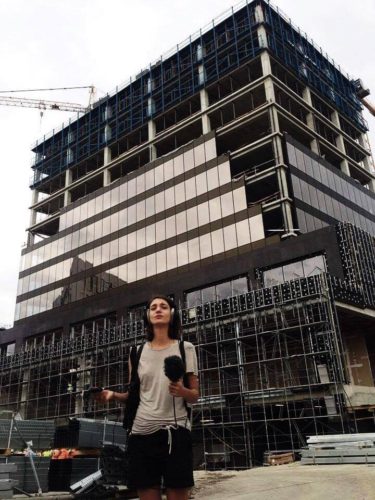
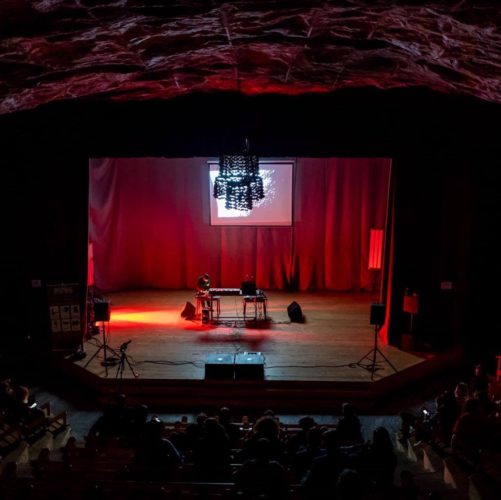
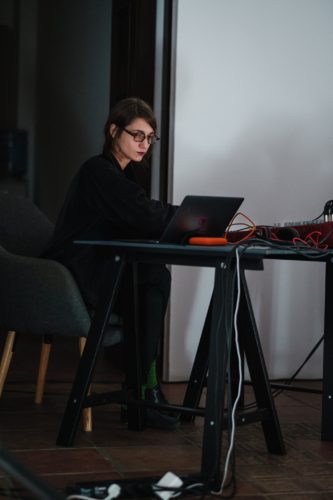
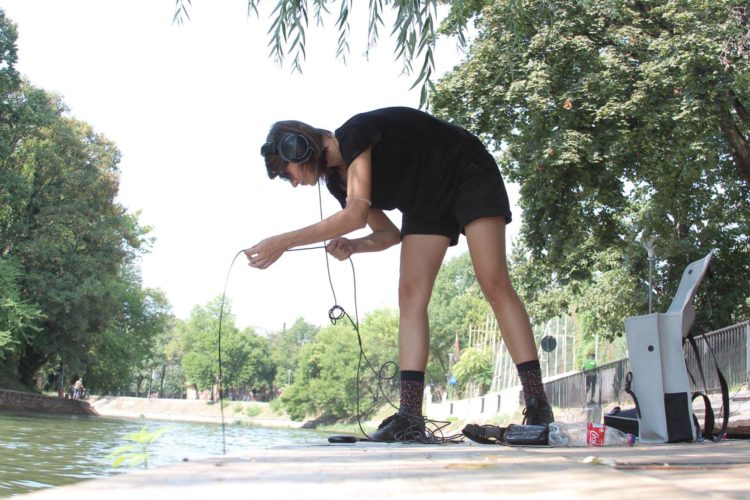
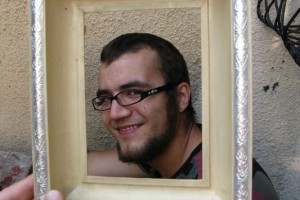
Comments are closed here.